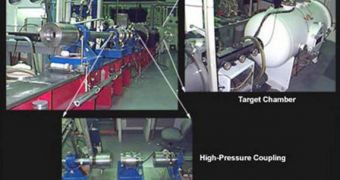Over the years, many researchers have argued against the primordial soup theory, saying that the seeds of life on our planet may have arrived on Earth via meteorites. As recent studies have suggested, both the atmosphere and the oceans on our planet may be of extraterrestrial origin, and so this new idea for the emergence of life is gaining new ground each day. Most of the proponents for this theory do not argue that life arrive here fully developed, but say that organic compounds carried by space rock may have found here a nice foundation to develop into something more, Space reports.
A number of astrobiologists agree for example that the primordial building blocks of life may have hitched a ride on meteorites as amino-acids. When properly combined, these chemicals produce proteins, which are a requisite of life as we know it. Eager to test this idea, a group of researchers based in the United States and Europe set out to recreate the conditions that amino-acids would be subjected to in case of a meteorite impacting Earth. They would have been exposed to great temperatures and shock during a slam, and the team wanted to test how much of them would endure following such an event.
“This study is the first which tested amino acid quantities similar to those found in real meteorites,” explains biophysicist Marylene Bertrand. Her work, which appears in the December, 2009 issue of the respected scientific journal Astrobiology, was made possible through funding secured from the French National Center for Scientific Research (CNRS). Before this investigation started, experts knew that more than 70 types of amino-acids had been discovered in meteorites, but no research team had before tried to test the chemicals' “survival chances” by taking into account the actual concentrations records show existed on the discovered space rocks.
So Bertrand and her team devised an experiment in which they tested meteorite impacts, by firing cylindrical plugs from a 20 mm gun into a saponite target containing amino-acids. The tests were conducted under vacuum conditions, and under various impact pressures. “It is easier to launch a projectile than to launch the samples,” the expert explained. She noted that some of the chemicals were evaporated by the blasts, but underlines that the different atmosphere our planet had billions of years ago may have prevented them from being lost. “The atmosphere was very different in primitive Earth and the conditions and effects of the impacts on organic matter could have been very different than now,” she concluded.

 14 DAY TRIAL //
14 DAY TRIAL //